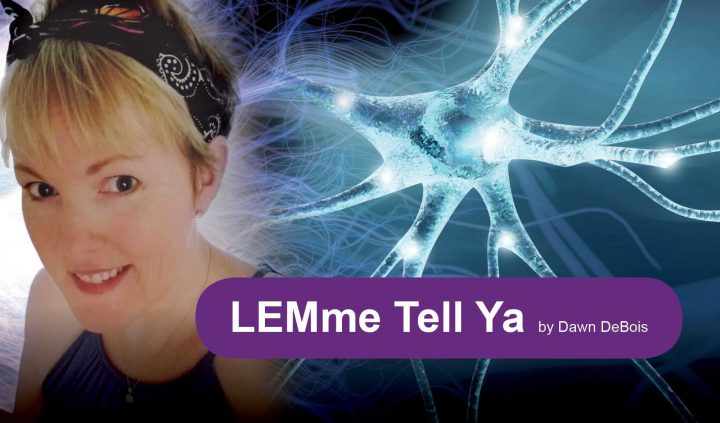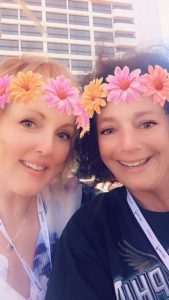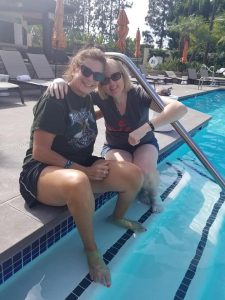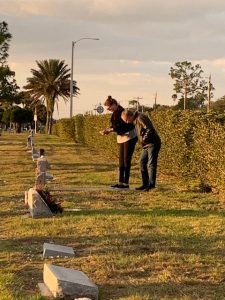An Ultra-rare Disease Has Led to an Ultra-rare Friendship

I don’t think there is a rare disease patient on the planet who doesn’t harbor some hurt deep in their soul about how friendships change after a diagnosis.
These changes were especially difficult for me. I was diagnosed as an adult, and my entire career was centered on people through networking, sales, public speaking, and recruiting. I’ve since learned that networking does not equal friendship.
Thankfully, the friends who have exited my life since my diagnosis have been replaced by inspirational and supportive friends who are now in my corner. Yes, many of them also are rare disease patients. I’m fortunate that many share my ultra-rare disease, Lambert-Eaton myasthenic syndrome.
One of my dearest new friends, whom I would never have met without my LEMS diagnosis, is fellow LEMS patient Romy Braunstein. She makes appearances in my columns a lot because she has become a huge part of my life.
I remember meeting Romy for the first time in Kansas City, Missouri. I had face-planted on the slanted sidewalk that morning while walking to breakfast. My face, hand, and wrist were a swollen, bleeding mess. However, nothing would stop me from meeting other LEMS patients. I didn’t go all the way to Kansas City to hide in my hotel room due to an unfortunate fall.
Romy was introduced to me with her wild, black, curly hair. “Dude, I have some balm in my room that will help if you’d like,” was her first comment to me. The last thing I wanted was goo all over the top of my oozing wounds, so I declined her offer and followed her and the other LEMS patients to lunch.
As I walked behind them and listened, I noticed something I had never seen before: Like me, Romy’s calves were underdeveloped. LEMS starts in the legs, causing weakness. Muscles don’t contract properly, causing wasting. In all my years of being an athlete, I could never build up my calf muscles. I found a comrade in rare disease with Romy just by seeing that her calves matched mine.
Over the next several months, and at patient meetings we attended together, I always looked forward to Romy’s sense of humor. Her perception of the world around her always turns into something humorous — and often hysterical.
Eyes followed us as we slowly walked from one conference room to another, often with tears streaming down our cheeks from laughter. Once, her antics sent me running to the restroom so that something other than tears wouldn’t go running down my legs from laughter!
At the end of one Global Genes RARE Patient Advocacy Summit in Irvine, California, we spent hours sitting by the pool. After laughing into hysterics over Snapchat calls to each other with the silliest filters on, our conversation turned more serious. Romy and I shared details of our childhoods, which surprisingly were as similar as our calf structure.
Like so many people with autoimmune diseases, Romy’s childhood had many traumatic events. I didn’t dwell on the events from Romy’s childhood (which her sister chronicled in the book “To Vegas and Back“). Instead, I marveled that if someone who has been through so much trauma can fill each day with laughter, then so could I.
Our friendship hit another level during that trip to Irvine. She always calls to check on me, and almost every day is filled with funny Snapchat photos on my phone. Her daughters have become like nieces to me.
When Romy announced that she was headed to visit her mother in New Smyrna Beach, Florida, I was stunned. “I lived in New Smyrna when I was a baby,” I told her. “My mother is buried there.”
I’ve only had the opportunity to visit my mother’s gravesite once since her death when I was 4 years old. “Could you check on it for me, Romy?” I asked.
Most people wouldn’t even consider visiting the gravesite of someone else’s mother while on vacation, particularly when walking is challenging. However, Romy sent me a photo last week as she entered the Edgewater-New Smyrna Cemetery. She said she “almost ran” through the cemetery to look because it was so cold. Those who know how slowly Romy walks due to LEMS will understand how funny that comment is.
Having a friend who is willing to walk through a cold cemetery while on vacation to snap pictures of a complete stranger’s grave is truly a rare gift, indeed.
Thank you, Romy, not only for filling our lives with a rare disease with so much laughter, but also for being that friend a girl can always count on. You are ultra-rare, indeed!
***
Note: Lambert-Eaton News is strictly a news and information website about the disease. It does not provide medical advice, diagnosis, or treatment. This content is not intended to be a substitute for professional medical advice, diagnosis, or treatment. Always seek the advice of your physician or other qualified health provider with any questions you may have regarding a medical condition. Never disregard professional medical advice or delay in seeking it because of something you have read on this website. The opinions expressed in this column are not those of Lambert-Eaton News or its parent company, Bionews Services, and are intended to spark discussion about issues pertaining to Lambert-Eaton myasthenia.










Leave a comment
Fill in the required fields to post. Your email address will not be published.